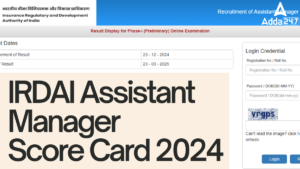Directions (1-5): Study the bar graph given below and answer the following questions:
The bar graph below shows the percentage break-up of number of persons who voted for three candidates in five different constituency of Uttar Pradesh in parliament election of India.
Note: Total votes obtained by all the three candidates in each constituency is associated with constituency as shown in the bar graph.
There are no invalid votes.
No. of votes are in hundreds.
Q1. If the ratio of female to male votes in total votes obtained by Tej Pratap from Lucknow is 7: 8 then the no. of female votes obtained by him from Lucknow is what percent of the total no. of votes obtained by him from all the constituency together ? (approximately)
Q2. What is the difference between the total number of votes obtained by Baldev Singh and by Sharmila Devi ?
= (0.5 × 150 + 0.5 × 200 + 0.3 × 250 + 0.4 × 350 + 0.3 × 200) × 100
= 45,000
Total no. of votes obtained by Sharmila Devi
= (0.3 × 150 + 0.2 × 200 + 0.1 × 250 + 0.34 × 350 + 0.5 × 200) × 100
= 32,900
∴ Required difference = 45000 – 32,900 = 12,100
Q3. What is the total no. of votes obtained by Bladev Singh from all the five constituency together ?
= 45,000 (from solution 2)
Q4. The number of votes obtained by Baldev Singh & Sharmila Devi together from Lucknow is what percent of the number of votes obtained by Tej Pratap from Lucknow, Jhansi and Gorakhpur together ? (approximate)
Q5. Find the average no. of votes obtained by Baldev Singh from all the constituency?
Q6. A boat travels upstream from B to A and downstream from A to B in 3 h. If the speed of the boat in still water is 9 Km/h and the speed of the current is 3 Km/h, what is the distance between A and B?
Q7. A man can row at the rate of 4 km/hr in still water. If the time taken to row a certain distance upstream is 3 times as much as to row the same distance downstream, find the speed of the current ?
Q8. P, Q and R are three towns on a river which flows uniformly. Q is equidistant from P and R. A man rows from P to Q and back in 10 hrs. He can row from P to R in 4rs. The ratio of speed of man in still water to the speed of the current is:
Q9. Ram and Shyam are travelling from point A to B, which are 60 km apart. Travelling at a certain speed Ram takes one hour more than Shyam to reach point B. If Ram doubles his speed he will take 30 minutes less than Shyam to reach point B. At what speed was Ram driving from point A to B ?
Q10. A 180 metres long train crosses another 270 metres long train running in the opposite direction in 10.8 seconds. If the speed of the first train is 60 kmph, what is the speed of the second train in kmph ?
Directions (11-15): In each of the following questions a number series is given which has only one wrong number. You have to find out the wrong number.
Q11. 7.5 47.5 87.5 157.5 247.5 357.5 487.5
Clearly, 47.5 is the wrong number. It should be replaced by 37.5.
Q12. 13 16 21 27 39 52 69
13 + 3 = 16
16 + 5 = 21
21 + 7 = 28 ≠ 27
28 + 11 = 39
39 + 13 = 52
52 + 17 = 69
Clearly, 27 is the wrong number. It should be replaced by 28.
Q13. 1500 1581 1664 1749 1833 1925 2016
1500 + 81 = 1581
1581 + 83 = 1664
1664 + 85 = 1749
1749 + 87 = 1836 ≠ 1833
1836 + 89 = 1925
1925 + 91 = 2016
Clearly, 1833 is the wrong number. It should be replaced by 1836.
Q14. 36 54 18 27 9 18.5 4.5
36 × 1.5 = 54
54 ÷ 3 = 18
18 × 1.5 = 27
27 ÷ 3 = 9
9 × 1.5 = 13.5 ≠ 18.5
13.5 ÷ 3 = 4.5
Q15. 1 8 27 64 124 216 343
1³, 2³, 3³, 4³, [5³ = 125 ≠ 124], 216, 343






 The Hindu Review October 2022: Download ...
The Hindu Review October 2022: Download ...
 IRDAI Assistant Manager Score Card 2024 ...
IRDAI Assistant Manager Score Card 2024 ...
 IRDAI Assistant Manager Prelims Cut Off ...
IRDAI Assistant Manager Prelims Cut Off ...




